The basic elements of manga are characters, motif, story, theme, direction in the form of picture composition, sound, action, effects . . . and then timing, sense and many other factors . . . . I began to understand that unless I comprehended and mastered all those factors myself, I couldn’t even begin to draw even a simple “Well, it’s kinda interesting,” light-read type of manga.
Toriyama-sensei is like a god to me.
– Mashashi Kishimoto, creator of Naruto
The man who brought you all the characters from Dragon Quest/Dragon Warrior and Chrono Trigger has a magnum opus. It is one of the most widely disseminated and influential works of fiction from the waning decades of the 20th century. Many mock it, everyone imitates it, but no one duplicates it, because it has duplicated itself more than an ancestral family yogurt culture. It is a genre of one.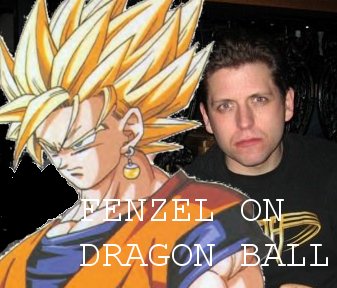
Akira Toriyama’s Dragon Ball just may be the best printed work you’ve never taken seriously. If you have taken it seriously, we here at Overthinking It are here to say: you’re probably crazy. And you’re not alone.
Today begins a series of in-depth discourses on this chi-blasting work of staggering genius. But first, I need you to do me a favor:
Stand up.
Assume a ready position, feet shoulder-width apart, staring straight ahead.
Scream for five minutes straight.
Done? Good. Now, read on —
(By the way, in this series, I’m not going to warn you before giving out Dragon Ball spoilers. But if there’s ever been a story where spoilers are irrelevant, it’s probably Dragon Ball. It doesn’t exactly aspire to unpredictability.)
In a Dragon Nutshell (if you know what Dragon Ball is, you can skip this part)
Dragon Ball is a Japanese comic book (manga) that ran for 11 years — from 1984 to 1995 — in two sections, the latter of which is sometimes referred to as Dragonball Z. The first focuses on its main character, Son Goku, as a child growing up, and the second focuses on him as an adult and father.
The comic starts as a reimagining of the great classical Chinese novel Journey to the West as a cute, zany farce about a teenage girl’s search for her first boyfriend, accompanied by a feral child with a monkey tail naïve to the differences between men and women (he pats people’s crotches when he meets them — not the sort of thing they publish in America). It eventually evolves into a series of epic martial arts “sagas,” where a band of heroes train themselves to do battle with a string of successfully stronger villains.
Perhaps because it comes out of farce, with its ever-fixed characters, Dragon Ball has a borderline-obsessive internal consistency, even as it moves through vast swings in tone, genre, theme and the story it’s trying to tell.
As a result, it is very, very repetitive. Repetition and pacing are the sources of both the chief complaints against the work and most of its aesthetic value.
Oh, it also inspired a very popular television show, a much less-popular and terrible spin-off television show, dozens of video games (and more new ones every year, even a decade after the series ended), and no fewer than 13 feature-length films, one of which is currently in theatres and prompts me to type a sentence I thought I never would — “It’s a big-budget martial arts spectacular produced by Stephen Chow and starring Chow Yun Fat that sucks so hard you probably shouldn’t see it.” (but I’ll talk about that some other time)
For now, it doesn’t really matter what exactly “Dragon Balls” are. The people who made the movie certainly don’t seem to care. But they don’t seem to care about a lot of things. Moving on.
Basic aesthetic/literary precepts
It’s traditional in these sorts of introductions for writers to explain some of their own literary values — why are you writing this? What should the reader watch out for? What sorts of first principles or other practices are underlying these judgements? We talked on our last Overthinking It podcast about what art is and what it isn’t.
To me, art is anything involved with what stuff means. Art and meaning are inextricably linked — anything that has to do with meaning is art, and anything that has to do with art is about meaning. That is why both St. Patrick’s Cathedral and Gossip Girl can be art — they are both efforts to sort out the meanings of things. Art and entertainment dovetail so often because we crave meanings for things and get pleasure out of them.
The concept of meaning has difficulty existing outside of art, because other vocabularies or ways of communicating can’t describe it very well. If all Swan Lake did was give us the approximate mass of a load of bauxite, it wouldn’t be art. The mass of bauxite is meaningless on its own. People moving around have no meaning — but people moving around in Swan Lake mean something.
Art does something that just talking about it can’t accomplish, which is why explanations of art are so often reductive or incorrect, such as “It doesn’t matter.”
Of course it matters. If it didn’t matter, it wouldn’t be so huge a part of people’s lives.
And by this definition, Dragon Ball is definitely art. It has oodles of meaning. Its meaning level is
OVER NINE THOUSAND!!
http://www.youtube.com/watch?v=TBtpyeLxVkI
OVER NINE THOUSAND?!
Dragon Ball expresses meaning primarily through symbolic repetition.
There are many events in Dragon Ball that draw necessary and deliberate comparison to one another, even when they are separated by years in the comic’s run. When they repeat, they do so a little bit differently, and there is a wealth of insight in the specific differences. Because every move is so deliberate, every repetition so purposeful, the text and visuals weave a rich web of meanings and connections that you can sit picking apart all day if you’re into that sort of thing (like I am).
In both the visual and textual elements, the piece is full of echoes, foreshadowing, type/antitype, all sorts of irony, and pretty much every figure of speech under the sun (watch for my Dragon Ball Guide to Figures of Speech, coming soon!).
Much like the attraction between two magnets tells you something about the magnets, the way that these repetitions function tells you a lot about the individual events, the world they take place in, and all manner of underlying or connected notions, from philosophy to moral lessons to aesthetics, and, most importantly, what it all means; what it’s all about, at least according to this one work by this one guy (and other people who helped him draw sometimes and stuff).
More simply put, Dragon Ball is very heavily weighted with motifs. NAME, admirer of Toriyama and author of Naturo, the manga that is in many ways Dragon Ball’s cultural successor, named motif as one of the major elements in manga. Well, personally I think Dragon Ball has some of the most compelling motifs I have ever seen.
An example: The world-destroying beam struggle
There are a number of moments in the overarching Dragon Ball narrative when a villain leaps into the sky and tries to destroy the earth by shooting a big laser at it with his hands. This scenario, as absurd as it is, is explored from a full range of angles. Each one is important, and each one is different in important ways. Here are the two most important, which also happen to exhibit one of Dragon Ball’s big trademark images (and are also pretty big spoilers, but as I said, it really doesn’t matter) –
Near the halfway point in the series, protagonist extraordinaire Son Goku discovers he is an alien from a distant planet that has been destroyed. He’s a lot like Superman, and his past has caught up with him. The prince and mightiest warrior of that planet, Vegeta, has come to Earth to either kill or retrieve Goku and destroy all life on the planetso that it can be sold for scrap. Epic martial arts fights ensue.
At one point while fighting Goku, Vegeta becomes so angry that he leaps into the air, screaming that he will destroy the Earth. He fires an energy beam (people in Dragon Ball can do that) down toward the ground where Goku is standing.
http://www.youtube.com/watch?v=pZTlqARsipg&feature=related
(Yes, the comic is a lot better than the TV show, I’ll cover that topic in another post)
Goku chooses to take the blast head on, firing a beam himself up from the Earth that hits Vegeta’s beam and struggles with it, keeping it from hitting the ground. Eventually, he calls upon the strength of the King Kai (a deity in the Dragon Ball universe) by ramping up his Kaio Ken, which gives him the extra oomph to win the struggle and save the earth from being destroyed (for now).
Much later on, Goku’s teenage son Gohan fights Cell, a biological robot genetically engineered from the cells of the best fighters of his father’s generation, who can use the powers of most of the adults he knows.
At one point while fighting Gohan, Cell becomes so angry that he leaps into the air, screaming that he will destroy the planet. He fires an energy mean (robots in Dragon Ball can do that, too) down toward the ground where Gohan is standing.
Vegeta is watching at this point, and says “It’s all over.”
Sure enough, Gohan takes the blast head on, firing a beam himself up from the Earth that hits Cells’ beam and struggles with it, keeping it from hitting the ground. But Gohan fails to destroy Cell.
Later, when the beam struggle resumes, Gohan hears the voice of his dead father, who is with the King Kai in Dragon Ball Heaven (Dragon Ball has one of the best fictional notions of the afterlife anywhere – watch for an article on it soon). The dead Goku lends Gohan his strength, and they are able to destroy Cell.
http://www.youtube.com/watch?v=jfbpO0ZF6IM
(and yes, the TV show adds a lot of nonsense to this scene – see if you can guess what ridiculous lines were added just for the anime! Hint: It’s the presence of all the other characters.)
Okay, that’s a lot. Let’s go back and look at what is being repeated in this cluster of motifs.
1. Prince Vegeta is a symbol for a dead legacy, a destroyed planet.
Cell is an amalgamation the previous generation’s legacy.
2. Both protagonists are standing on the Earth, and confront a blast coming at them from the sky (heaven).
3. In both cases, the blast intends their own deaths and the death of the whole world.
4. Vegeta is pushed back by strength gained from God (the King Kai Fist).
Cell is defeated by strength gained from Gohan’s father, who is with God.
The presence of Vegeta in both exchanges heightens the comparison.
The motifs here are all about the present’s relationship with the past, and the lot of the present generation as it confronts the pervious one, and thus the overwhelming power of mortality.
The repetition compares countries and homelands with families, Gods with fathers, and confronting death head-on with being alive.
Already, the meaning of it is taking shape — you can even reach a reductive formulation for the meaning of life from it. Or a small part of one. The meaning of life is to be the active and vivid manifestation of the past, to be part of a circle of death while defying it.
Of course, this is very small, but we’re only talking about a few pages in Dragon Ball here out of thousands. And it doesn’t even get into detail on the visual elements.
On the next episode . . .
Dragon Ball yields to hundreds, if not thousands, of these sorts of close readings, with the shards of the larger collage sewn in a tapestry of motifs and themes across a decade of comic books. A less repetitive comic book would not. The pressure to be new too often tears sequential art (like comic books, TV, movies, or Hogarth lithographs) for its moorings, and without a firm grounding, the variations do not accomplish as much.
The comic manages to stay grounded while it varies to a remarkable height of absurd extremes. That alone is a supremely elegant feat of narrative structure.
And if you go looking for the good stuff, you find it. To an armchair literary critic (is there any other kind) used to poring through dry old texts, Dragon Ball is like Sutter’s Mill. There is so much gold that people can just come in and pick it up off the ground or scoop it out of the river.
What do you want to read in the next episode of Fenzel on Dragon Ball? I’ve got a lot to talk about, but I could go on forever, and I want to make this fun for everybody, because, as Muten Roshi, the Turtle Hermit, the Invincible Old Master tells Tenshinhan at the Strongest Under the Heavens Tournament, enjoying and loving life is a big part of what it is all about. I feel the same way about reading blogs!
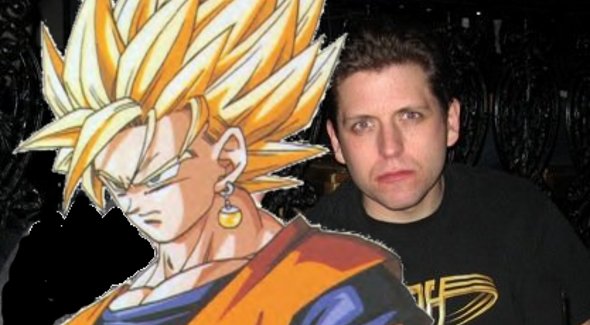
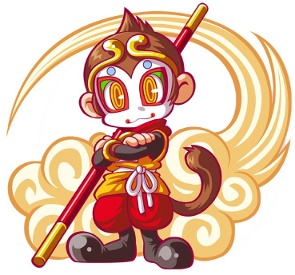
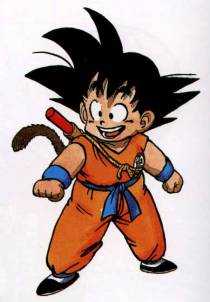
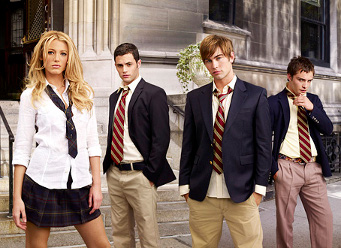
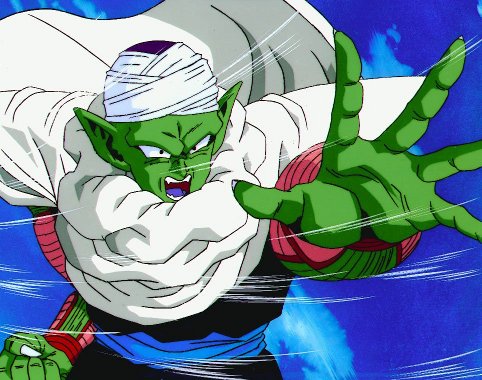
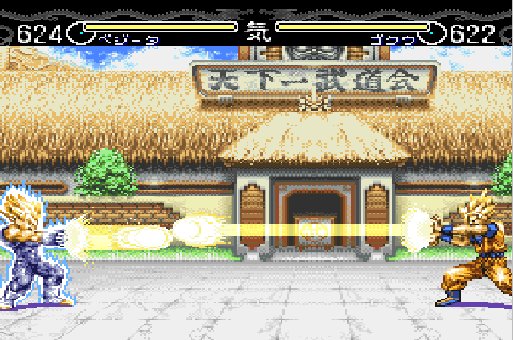

Oh God… I didn’t think y’all were serious during the Podcast. I’m giddy beyond belief. Fenzel, you’re the Trunks of my anime heart right now.
There are too many ideas running through my head…
To relate it to other posts, a _Dragonball_-and-time post may be another cray-zay way to go; not just the generational thing (Goku-Gohan-Pan and the symbolism there), but also how some of those epic battles last 4evar (ahem, Namec).
I’d like to hear why the manga is better. I watched but didn’t read, so I’m curious.
You kind of hint at it a bit, but a deeper look at the influence the series has/had on pop culture, both on those that love it and those that hate it and why each does so, has potential. There is, indeed, a lot to “get” out of it, so should it be taken with a grain of salt by those that *want* to “get” something (apart from the pleasure)?
Speceism (sp?). You know, discrimination/assumptions/etc. based on species. Is that a metaphor for racism, ethnocentrism, etc.? How about those inter-species marriages?
I need to stop now (must… go… to… work…), but I couldn’t help myself.
Wow, very impressive Fenzel! I was a fairly big fan of the TV show, but never read the manga, so my experience is fairly limited…..but I cracked up at the symbolism in people’s names (Piccolo, Drum, etc. and Briefs, Bra, Bulma, Trunks, hahaha).
Maybe a story looking at the theme of becoming your true potential? If I remember correctly, Gohan was the most powerful for a while, but rarely lived up to his potential.
The synth tune playing in the first half really reminded me of the intro to “Money for Nothing”. I expected the pivotal power-beam moment to be interrupted with the big ballsy “Duh-dudu-DUH-duh-Duh-duh duh-DUH duh DUH” bass line.
Great article, excited for more! I love Dragonball – I used to watch Z when I was about 13, now I’m watching Dragonball from beginning to end, then I will move on to Z!
That’s it,you made it, I’m gonna read the comic, the TV series was fun, up to a point, but just that. Now there’s more to DB. hey since you took the hard way wway and went to suffer the “adaptation” to film, I’m going theere too, your work clearly deserves it.
SOORY MY KEYBORD IS KIND BROKEN!!!
Finally typing from a relatively decent keyboard, looking forward for more on DB and any other of the many and very interesting things one gets to read in this extremely fun site.
Are they really going to be 48 posts?. Groovy.